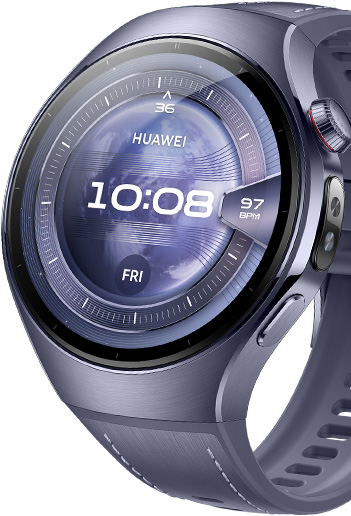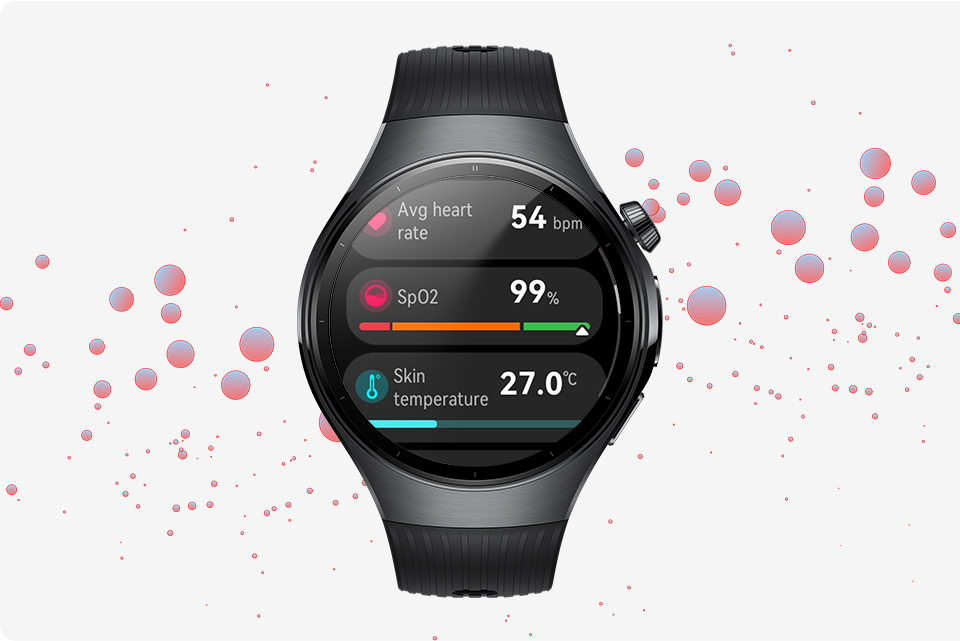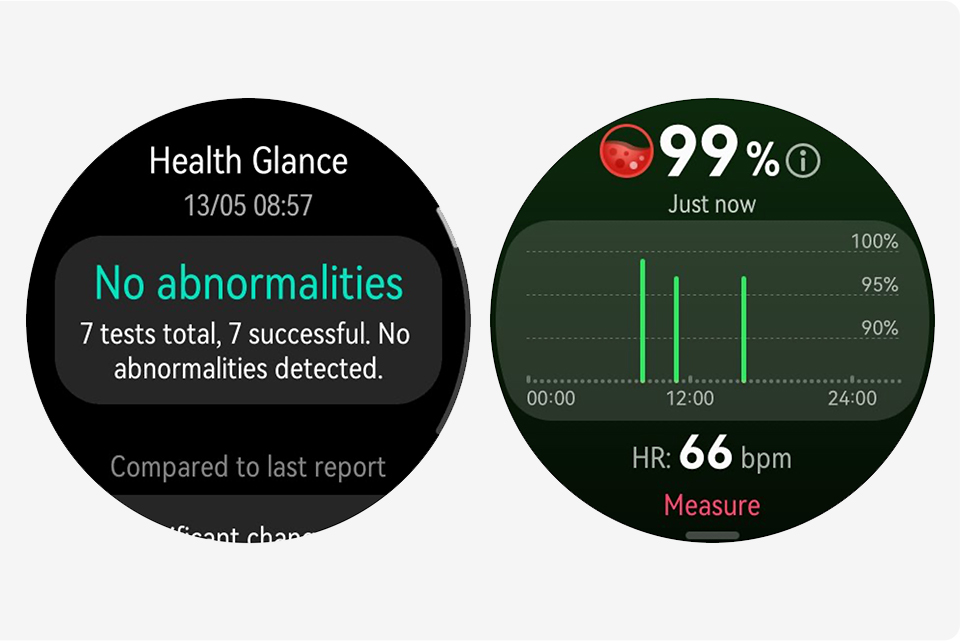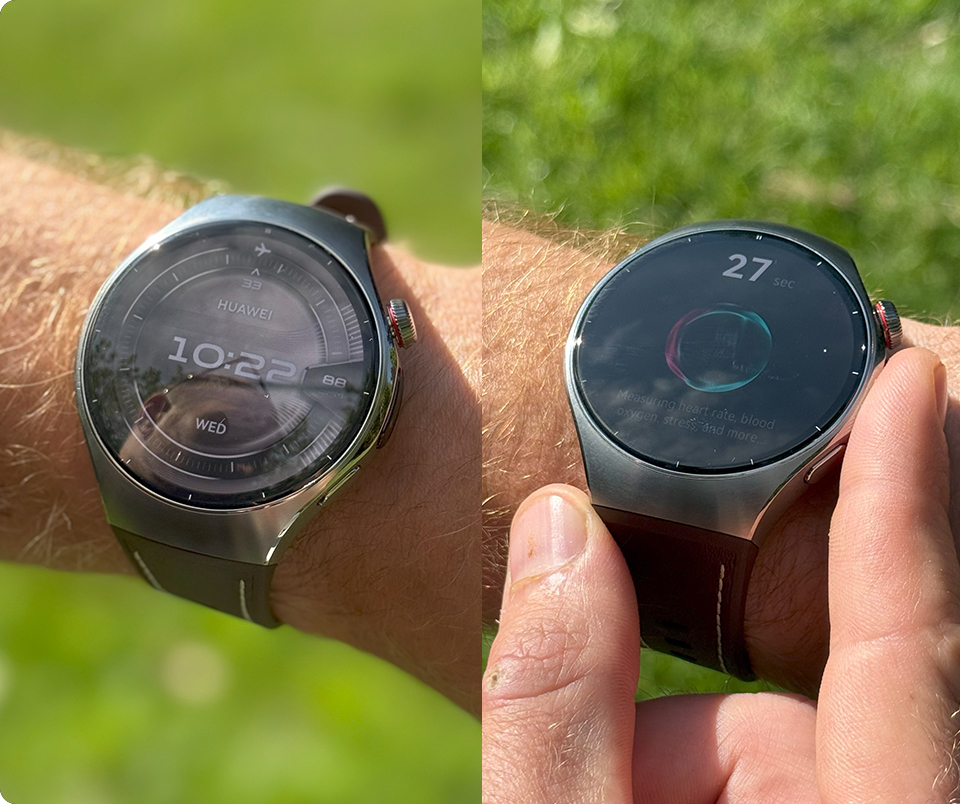SpO₂ at a Glance:
The HUAWEI WATCH 5 with X-TAP

Reading duration: Approximately 7 minutes
The HUAWEI WATCH 5 Series introduces X-Tap, a convenient way to measure blood oxygen saturation directly from your wrist. But how useful is it in reality?
This blog explores why blood oxygen matters, when levels may drop, how X-Tap compares with traditional pulse oximeters, and how to use this information to support your health and performance goals.

Dr Ben Buckley
Ben is a Senior Lecturer in Cardiovascular Physiology within the Liverpool Centre for Cardiovascular Science and a Fellow of the ESC (European Society of Cardiology). His research interests include cardiovascular epidemiology and use of mobile health technology to improve cardiovascular health. He has won the prestigious ESC Young Investigator award for his research in Preventive Cardiology.
In this article
Why Are We Interested in Blood Oxygen Levels?
SpO₂ reflects how well your lungs, heart, and blood vessels are working together to deliver oxygen to your tissues. Oxygen is needed for normal healthy functioning and to generate energy, in all our tissue, but especially our brain and skeletal muscle. It is carried by haemoglobin – a sort of delivery van in the blood stream – that picks up oxygen in the lungs and transports it around the body to be dropped off where it’s needed. SpO₂ is presented as a % of haemoglobin that is carrying oxygen (i.e., how full are our delivery vans). Low oxygen levels - known as hypoxaemia - may be completely normal depending on your environment or could explain fatigue, breathlessness, and poor sleep, in clinical scenarios.
The Importance of SpO₂ in Supporting a Healthy Lifestyle:
SpO₂ is a crucial metric for everyone, whether they have an underlying medical condition or not. These days, smartwatches provide greater accessibility to health metrics like SpO₂ and allow users to view changes over time. Keeping an eye on blood oxygen levels regularly can assist in avoiding emergency situations and provide continuous insights throughout the day and night.

• Multi-sensing X-TAP Technology
• Superior-grade Materials
• eSIM Cellular Calling
• One-Tap Health Glance
• Ultra-long Battery Life Mode
• Compatible with Android and iOS

Athletes and travellers exposed to high-altitude environments
As altitude increases, oxygen pressure decreases, which naturally lowers your SpO₂. This can be asymptomatic as is typically the case when flying or can lead to symptoms of acute mountain sickness (AMS) such as headache, nausea, fatigue, and poor sleep, when gaining too much altitude too quickly.
Monitoring SpO₂ at altitude can:
- • Help assess how well you’re acclimatising.
- • Warn of early signs of AMS before symptoms worsen.
- • Guide decisions about pace of ascent, rest days, or the need to descend.
- • Altitude training can acutely lower SpO₂, stimulating red blood cell production, so tracking it helps manage training load.
- • Post-exercise measurements can offer insight into how well the body is reoxygenating, which ties into conditioning status.
For endurance athletes travelling to high-altitude environments, real-time SpO₂ can be an edge. Even on commercial flights, where cabin pressure is equivalent to about 2,000–2,500 metres, some people with heart or lung conditions may benefit from checking their oxygen levels.(5) Indeed, the effects of long-haul flights on oxygen saturation may even be important considerations for elite level athletes travelling for competition.(6)
From mountain peaks to medical recovery, tracking SpO₂ with HUAWEI X-TAP turns health insight into daily action wherever life takes you.
Aside from flying, travelling from sea-level to high altitude environments including ski resorts, mountaineering and trekking expeditions, even some pilgrimages can stress the body by exposing it to acutely lower levels oxygen availability than what it is used to.
In short, SpO₂ tracking isn’t just for patients—it’s a vital sign with broad applications in health, fitness, and lifestyle management.

How to Monitor Your Blood Oxygen Level
with a Pulse Oximeter
What is a Pulse Oximeter?
A pulse oximeter is a fingertip device that uses red and infrared light, often through your finger or earlobe, to measure how much of your haemoglobin (delivery van) is carrying oxygen (blood oxygen saturation). It's widely used in hospitals, clinics, and increasingly in homes for quick, non-invasive monitoring.

How to Use the Pulse Oximeter
- • Sit quietly in a relaxed position.
- • Place the oximeter on your index or middle finger.
- • Wait for the reading to stabilise.
- • Note the SpO₂.
Pro tip: Cold fingers, nail polish, or movement can interfere with accuracy. Warm your hands and remain still.
How to Read the Pulse Oximeter
- • SpO₂ 95–100%: Normal at sea level.
- • SpO₂ 92–94%: Borderline—consider context (e.g., altitude, illness?).
- • SpO₂ < 92%: May indicate hypoxaemia—seek medical advice, especially with symptoms.
Test Your Blood Oxygen Level with X-TAP
HUAWEI X-Tap delivers key health metrics, empowering you to track trends and stay ahead of your wellbeing, day to day, week to week.
What is the HUAWEI X-TAP?
X-TAP is a one-tap shortcut on the HUAWEI WATCH 5 that instantly measures key health parameters - including blood oxygen saturation, heart rate, skin temperature, ECG rhythm, pulse wave velocity, stress levels, and even a respiratory assessment - without navigating through menus.
Powered by photoplethysmography (PPG) sensors and HUAWEI’s latest algorithm, X-TAP provides a user-friendly and faster alternative to traditional pulse oximeters, ideal for frequent checks in day-to-day life. X-TAP’s fingertip sensor is also not affected by the shortcomings of a classical PPG sensor, like tattoos, hair, or nail polish for pulse oximeters.


How to Use HUAWEI X-TAP for a Health Glance
- • Place your finger on the X-TAP sensor.
- • Stay still with your wrist facing upward.
- • Let the watch complete the reading (around 60 seconds).
- • View your SpO₂ result on the screen (as well as the numerous other key health parameters), and access trends in the HUAWEI Health App.
How Accurate Is It?
While not a clinical device, the HUAWEI WATCH 5’s SpO₂ readings have shown good correlation with fingertip pulse oximeters in multiple user scenarios. X-TAP is best used for tracking trends, spot checks, and contextual insights in supporting a healthy lifestyle - not for diagnosing or treating disease.
How to Optimise Blood Oxygen
Regardless of whether you're monitoring with a watch or oximeter, improving blood oxygenation can support energy and brain function. Here’s how:
- • Exercise regularly: Aerobic activities improve lung efficiency and blood flow.
- • Practice breathing exercises: Techniques like diaphragmatic or box breathing can increase oxygen exchange.
- • Improve sleep hygiene: Good sleep supports oxygen balance and recovery.
- • Avoid smoking and air pollution: Both damage lung tissue.
- • Hydrate: Well-hydrated blood transports oxygen more efficiently.
- • Iron-rich nutrition: Helps red blood cells carry oxygen (e.g., leafy greens, legumes, red meat (in moderation)).
- • Weight management: Maintaining a healthy weight reduces the risk of sleep apnoea and improves lung capacity.
SpO₂ levels naturally fluctuate, but sustained low levels or symptoms deserve prompt attention. Seek medical advice if:
- • SpO₂ stays below 92% at sea level.
- • You feel short of breath at rest.
- • You experience dizziness, fatigue, or confusion.
- • You notice bluish lips or fingertips (cyanosis).
- • You have known lung or heart disease and see a drop in your usual SpO₂.
Good to know:
- • Blood Oxygen (SpO₂): Shows how much oxygen is in your blood. Normal: 95–100%.
- • Heart Failure: The heart can’t pump enough blood—organs get less oxygen.
- • COPD: Chronic lung disease causing breathlessness, often due to smoking.
- • Sleep Apnea: Breathing stops during sleep, lowering oxygen and straining the heart.
Practical Takeaways
SpO₂ is a vital sign that can show how strong your respiratory and cardiovascular health is.
The HUAWEI X-TAP feature is a convenient way to monitor your SpO₂ trends, especially during travel, training, or at work. However, pulse oximeters remain the clinical standard, especially for those with chronic health conditions.
Understanding context matters: SpO₂ is lower at altitude, during exercise, or with shallow breathing, but persistent or severe drops should prompt further evaluation.
Practical Tip for Device Users
It’s important to know your baseline SpO₂, which is the oxygen saturation level you typically have at rest at sea level. This value serves as a personal reference point when you ascend to higher altitudes. Once at altitude, you should monitor your SpO₂ levels twice daily, ideally in the morning and evening. Tracking these values helps you observe how your body is adjusting, with a gradual improvement back toward your normal levels expected over the course of 3 to 7 days.

Conclusion
Keeping track of your blood oxygen saturation (SpO₂) can offer critical insights into your health and performance. For travellers and athletes at altitude, SpO₂ tracking supports safer acclimatisation by identifying potential risks before symptoms escalate. With wearable tools like the HUAWEI WATCH 5 Series, real-time SpO₂ data is now more accessible than ever - empowering you to better understand your body, respond to changes, and optimise both daily wellbeing and high-altitude adventures.

The author of this article is Dr. Benjamin Buckley. The views expressed are his own.
The information is to be used as general information only, and is not to be taken as advice with respect to any individual situation and cannot be relied upon as such. A healthcare provider should be consulted when attempting to diagnose a condition or when determining the best course of action for any health-related concern.
The ECG feature is intended to be used by people aged 18 years and over, but is not intended to replace any medical diagnosis or treatment. Data obtained during the use of this feature is for personal reference only. Before using ECG, please carefully read the Instruction for Use
Due to national restrictions on obtaining approval / registration as a medical device, ECG feature only works on watches and smartphones purchased in countries where the service is currently available.
Supported smartphones: Mobile phones with Android 6.0 or compatibles, HarmonyOS 2.0 or compatibles, or iOS 12.0 or compatibles. The HUAWEI Health app version on your mobile phone must be 11.0 or compatibles. Please make sure that your wearable device and phone are running the latest versions before using ECG.
The Health Glance, sleep monitoring, stress, SpO2, heart rate, heart rate variability (HRV), skin temperature, arterial stiffness, respiratory overview features are not a medical device, and therefore its monitoring data and results are for reference only and should not be used as a basis for medical diagnosis or treatment.
References
1. Burtscher M. (2012): Exercise limitations by the oxygen delivery and utilization systems in aging and disease: coordinated adaptation and deadaptation of the lung-heart muscle axis - a mini-review
2. Richalet JP, Hermand E & Lhuissier FJ. (2024): Cardiovascular physiology and pathophysiology at high altitude
3. Kales A, Bixler EO, Cadieux RJ, et. al. (1984): Sleep apnoea in a hypertensive population
4. Lavie P, Herer P & Hoffstein V. (2000): Obstructive sleep apnoea syndrome as a risk factor for hypertension: population study
5. Humphreys S, Deyermond R, Bali I, et. al. (2005): The effect of high altitude commercial air travel on oxygen saturation
6. Geertsema C, Williams AB, Dzendrowskyj P, et. al. (2008): Effect of commercial airline travel on oxygen saturation in athletes
7. Luks AM, Beidleman BA, Freer L, et. al. (2024): Wilderness Medical Society Clinical Practice Guidelines for the Prevention, Diagnosis, and Treatment of Acute Altitude Illness: 2024 Update
8. West BJ, American College of Physicians, American Physiological Society. (2004): The Physiologic Basis of High-Altitude Diseases
Administrator
Copied

